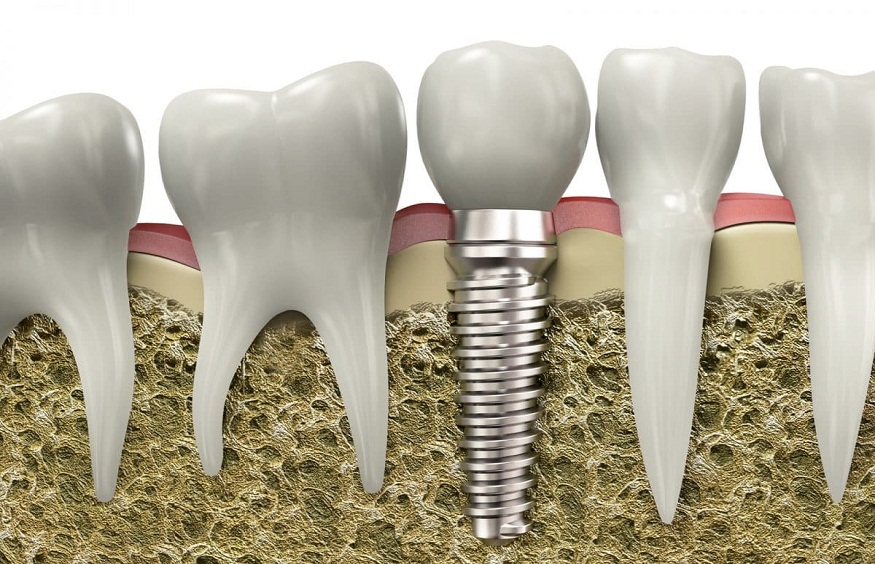How Can You Prevent Peri-Implantitis?
Knowing the dangers of peri-implant diseases is essential if you are thinking about getting dental implants. After dental implant placement, this type of disease may develop and reduce the implants’ lifespan. The terms of peri-implant illnesses, related risk factors, and prevention strategies will all be covered in this blog post. In Glen Oaks, many patients visit dental clinics to treat peri-implantitis. If you get peri-implantitis after dental implants Glen Oaks, NY, contact a dentist.
Ways to prevent peri-implantitis
The term “peri-implant diseases” refers to infections that develop near dental implants. Peri-mucositis and peri-implantitis are the two types of peri-implant disease.
1. Peri-mucositis
An infection of the mucous membrane (gums) within the implant is known as peri-mucositis. As a result, the gums may feel hypersensitive to the touch, bleed readily, and seem red and swollen. If neglected, peri-mucositis may develop into peri-implantitis; however, it can also be healed with treatment.
2. Peri-implantitis
A more severe infection called peri-implantitis results in gum inflammation and bone degradation around the implant. Along with the previously mentioned signs, peri-implantitis is further defined by the loosening of the implant, pus surrounding the gums, and gum recession that exposes the underneath implant threads. Surgery is nearly usually required to treat peri-implantitis.
If treatment for one of these illnesses fails, the implant may be lost. There are multiple ways that peri-implant illnesses may give rise to implant failure. The implant may become loose due to the infection, or it might fall out. The implant may become unstable as a result of the infection’s tendency to weaken the surrounding bone. Furthermore, the infection may harm the gums and surrounding tissue, making future implant placement challenging.
A visual examination, imaging tests, and a CBCT scan are usually carried out in order to identify these diseases. Examining the implant, gums, and neighboring bone visually could help detect any signs of inflammation or infection. Although they may not always produce an accurate representation, radiographs can also be helpful in identifying any changes in the bone surrounding the implant. Because of this, a CBCT scan is often used to obtain a more thorough picture of the region around the implants and can assist in detecting any bone loss. Your dentist can diagnose peri-mucositis or peri-implantitis based on the presence of bone loss.
What are the risk factors?
Knowing the risk factors involved is essential due to the possible hazards associated with peri-implant disorders. Several risk factors have been identified, including:
The most significant risk factor for peri-implant illnesses is certainly poor dental hygiene. Inflammation and infection may result from plaque and bacterial accumulation around the implant. Regular brushing and flossing is crucial, as is visiting your dentist for cleanings.
1. Avoid smoking
Research shows that smoking raises the chance of developing peri-implantitis. This is probably because smoking reduces blood circulation to the gums, which can hinder the ability to heal.
2. Limit alcohol consumption
Drinking alcohol has also been related to an increased chance of developing peri-implantitis. This is likely due to alcohol drying out the mouth, which can cause saliva to decrease. Saliva is essential to maintaining a bacterial-free and hygienic mouth.
3. Systemic conditions
Diabetes is one example of a systemic condition that may increase the likelihood of peri-implantitis. This is possible because these diseases could weaken the body’s defenses against infection.
How can you avoid peri-implantitis?
1. Maintain Proper Dental Hygiene
Maintaining proper oral hygiene is the most successful way to avoid peri-implantitis. This is because the primary cause of these illnesses is plaque and bacteria that build up near the implant’s base. Make sure to floss every day, brush at least twice a day, and schedule routine dental cleanings.
2. Regular dental exams
Regularly seeing your dentist for checkups and cleanings is another strategy for preventing peri-implantitis. By doing this, your dentist will be able to recognize any issues early and cure them before they worsen.
Wrapping up!
In this blog, we covered peri-implant disorders like peri-mucositis and peri-implantitis, along with their risk factors and preventive measures. Keep in mind to maintain proper oral hygiene, plan routine dental examinations and cleanings, quit smoking, control your alcohol intake, and take care of your overall health. You can significantly decrease your chance of getting peri-implantitis by following these suggestions.


Leave a Reply
You must be logged in to post a comment.